May 3 - 9, 2015: Issue 212
Autumn Jobs: Dealing With Dampness Inside the Home
Instances of 100% humidity have been with us for a few weeks now, a good time to give wood furniture an extra polish to prevent mould, treat any leather seats with some TLC and see where else ‘interior dampness’ may be affecting the quality of air inside the home or damaging walls, windows and floors.
High levels of indoor humidity aids the increase of bacteria, viruses, mites and fungi, and can lead to respiratory infections and illnesses: "The majority of adverse health effects caused by relative humidity would be minimised by maintaining indoor levels between 40 and 60%." (1.)
This week we look at how to prevent and treat dampness to keep your home free from creeping dank and the problems associated with this.
Condensation
The warmth inside a home will cause moisture to evaporate into the air. If you always keep your windows and doors shut, fresh air can't replace this water-laden air.
When humid air comes into contact with a cold surface, it cools and condenses - depositing droplets of water. In cold weather, the temperature of your external walls and windows is lower than the air indoors - so moisture will condense and run down your window panes, and into your gyprock, window ledges and even affect wooden architraves at the base of glass doorways.
Dampness occurring in a modern house in good condition is usually due to condensation. To reduce it, you can extract the moist air with an extractor fan, reduce the moisture in the air by improving your ventilation and install insulation so the inner surfaces of your walls and windows don't get so cold. Cleaning extractor fans and vents will maximise their function of removing moisture from interior rooms.
Damp rooms in Winter occurs when a room gets too cold and the air can't absorb the moisture. By turning up the heating the air can absorb more moisture. Ensure rooms continue to have ventilation during these months so the damp air can escape as well.
If there's widespread damp or mould on your upstairs walls and ceilings a lack of ceiling ventilation or insulation can be the problem. To remedy this, you'll need to have insulation installed and check the air vents for your ceiling are not blocked.
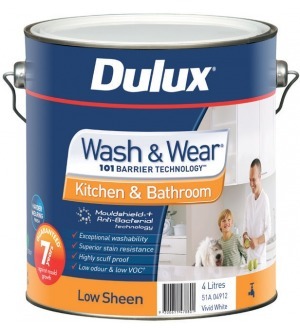 If you have a persistent problem with mould in some areas of your home, year round whether from humidity in warm months and condensation during cooler months, it may be a good idea to apply a mould-resistant paint to these surfaces to prevent mildew. Make sure you clean the areas you are going to repaint well first or the mould will leach through your new work.
If you have a persistent problem with mould in some areas of your home, year round whether from humidity in warm months and condensation during cooler months, it may be a good idea to apply a mould-resistant paint to these surfaces to prevent mildew. Make sure you clean the areas you are going to repaint well first or the mould will leach through your new work.
There are a great range of dehumidifiers available that will extract moisture from these rooms, and many of these also ‘clean’ the air, great for a damp salty air environment like ours – just remember some portable versions need to have their water tanks emptied regularly – you will be surprised how much accumulates and how quickly.
Right: Dulux Wash & Wear Kitchen and Bathroom: $81.50 , • 4L., • Low-sheen or semi-gloss. • Mould and bacteria resistant, • Water clean-up. • Also available - 10L $173
A few other simple ways of keeping dampness down within the home are to:
• Open windows when there is no rain and some breeze. This will increase airflow through the house, which will reduce humidity.
• Externally vent all water-vapour producing appliances such as washing machines, clothes dryers, showers and stoves. Venting into the roofspace can cause condensation problems, especially when the house has a metal roof.
• Install extractor fans in the kitchen, bathroom and laundry.
• Cover pans when cooking and let steam escape by opening a window or using an extractor fan.
• Dry clothes outdoors whenever possible.
• Keep furniture away from walls to improve air flow in the room.
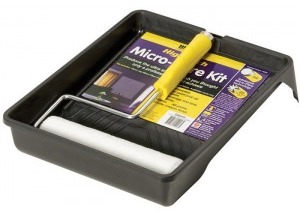 • Don’t fill your cupboards to bursting point, especially those where cloth is stored.
• Don’t fill your cupboards to bursting point, especially those where cloth is stored.
• Close kitchen and bathroom doors to prevent steam travelling into colder rooms.
• Wipe surfaces when moisture settles to stop mould forming.
Right: Unipro Microfibre Roller Kit: $15.75 , • 230mm.• Microfibre roller cover.• High absorption.• Ultra smooth finish.• Also available - 270mm $19.98
Damp spots appearing on ceilings and becoming black with mould indicate there is a lack of ventilation in your roof cavity (the space between tiles and ceiling), a cracked or leaking tile (see re-point your roof) or that guttering may be leaking or that the flashing may have cracked or become dislodged, allowing water through. You'll need to refit the loose flashing, or replace it if it’s damaged with the same type of flashing or a self-adhesive flashing strip.
Cleaning debris from your guttering regularly and apply a sealant to small areas that have deteriorated or aren’t sealed properly and replacing those that are beyond repair will prevent water being funneled into the roof cavity.
Penetrating Damp
Penetrating damp is caused by water seeping through the walls at any point (as opposed to rising damp, which is confined to the lower part of ground-floor walls). You may see damp patches appear when strong winds drive rain against the wall of your house, and disappear when the weather improves.
A semi-permanent damp patch can be caused by a leaking gutter or a crack in the brick mortar. If a whole wall is showing signs of damp, it may mean that old bricks have lost their weatherproof facings and become porous.
Penetrating damp is less likely to affect your home if it has cavity walls. If water does cross the cavity, it's usually because mortar has spread onto a wall tie.
Old bricks can become porous and let water penetrate though the wall. Replace the bricks, or repoint and treat the area with an exterior silicone water-repellent fluid.
Cracks in brickwork or damaged pointing in the joints will allow water through to your wall too. Where this appears have a look at the exterior of the structure and replace the damaged bricks and fill any gaps in the mortar.
If the brickwork is secure, mortar on a wall tie in the cavity could be bridging the gap and allowing water to cross to the inner wall. The only way to solve this is to remove some bricks, inspect the cavity and rake out or chip off any mortar on the wall ties.
Rising Damp
Rising damp is confined to the lower part of walls (up to a height of about one metre) and to solid floors, and is caused by water soaking up from the ground.
If you have a modern house, it will be protected by a waterproof barrier that's built into the walls 150mm above the ground (the damp-proof course) and another one that's laid under concrete floors (the damp-proof membrane).
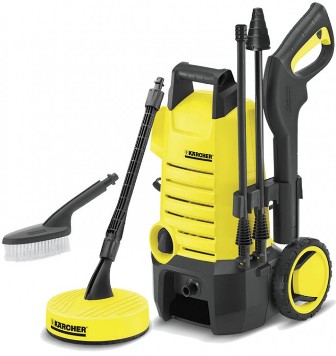 If there's a gap or breach in your damp-proof barrier, water from the ground can be drawn up into the structure of your house. This can happen if the plastic membrane under your floor has been torn (by sharp stones, for instance).
If there's a gap or breach in your damp-proof barrier, water from the ground can be drawn up into the structure of your house. This can happen if the plastic membrane under your floor has been torn (by sharp stones, for instance).
If you live in an old house built without a damp-proof barrier, it could well suffer from rising damp. While the problem is made worse by wet weather, it never completely dries out even in summer. If you spot signs of rising damp, you may need to call in professional help to find out the cause and remedy it.
One way you can protect your home from this is to ensure there is no build up of earth against your exterior walls; this will cause water to breach your damp-proof course and let water seep through. You'll need to remove the earth and let your wall dry out.
Right: Karcher K2.260 T50 High Pressure Cleaner: $179.00 • 1.4kW.• 1600psi(max). • Includes trigger gun with 5m high pressure hose, T50 high speed deck and patio cleaner dirt blaster and brush.
You can also ensure an adequate flow of air ventilates the area beneath your floor by installing an Edmonds Ecofan.
Preventing Flooding around your home
As severe wet weather appears to be occurring more often, and more forecast before Autumn and Winter are through, homes are prone to flooding.
A few measures you can take to prevent this around the home:
•. Keep your gutters and downpipes clear of any leaves and debris.
• If surface water isn’t draining properly you may have a blocked Stormwater drain – check these to clear of debris washed into and if the problem persists and you have pools that don’t disperse, it is time to contact your plumber before the problem becomes worse.
• Ensure outside ground surfaces slope away from your house’s walls.
The products shown on this page are all from the current Johnson Brothers Mitre 10 catalogue (to May 10th) and as Mother’s Day falls on the day these finish we include a few specials from this any mum watching the family budget, or any child who would rather give mum a rose that will grow eternally instead of just a bunch of flowers may wish to know about:
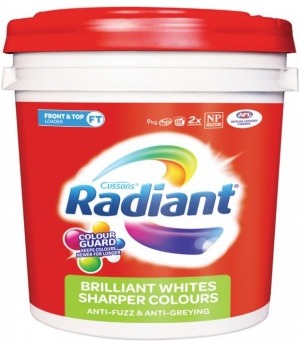 Radiant Laundry Powder: $35.00 • 9kg., • Suitable for top and front loaders.
Radiant Laundry Powder: $35.00 • 9kg., • Suitable for top and front loaders.

Aussie Rose Collection:$12.95 each, • A selection of popular varieties. • 2 year old plants.
Chrysanthemum: $5.00 • 125mm pot. • Assorted flower colours. Pots and punnet sizes, styles and varieties may vary by store and by state
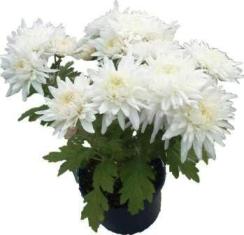
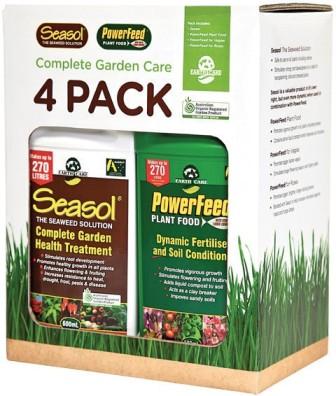
Seasol Gift Pack: $24.00 • Pack includes 600ml - Seasol, Powerfeed, Powerfeed for Roses and Powerfeed for Vegies.
Spear & Jackson Trowels – Pink: $5.00 • 11”. • Durable PVC handle.
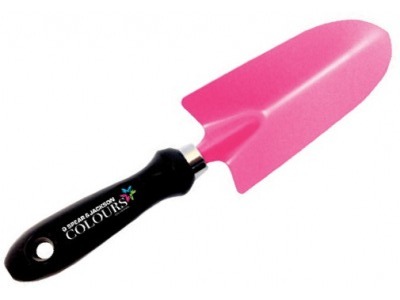
Reference
1. Indirect health effects of relative humidity in indoor environments. A V Arundel, E M Sterling, J H Biggin, and T D Sterling. Environmental Health Perspectives. 1986 Mar; 65: 351–361. Retrieved from: www.ncbi.nlm.nih.gov/pmc/articles/PMC1474709
Products advice is available from the trained friendly staff at Mona Vale and Avalon Johnson Brothers Mitre 10.


Previous DIY Pages:
Decking Timbers Caring For Your Deck Decking Finishes Privacy Screens I Privacy Screens II Privacy Screening Hardwoods Autumn Paths and Lawns Insulation Batts Plasterboard Ventilation - Edmond's Ecofan Blackboards for Children and Home Spring Lawn Care Shade Sails & Watering Basic DIY Tools DIY Tools - Power Drills Recycle Your Trampoline into An Air Bed How to Build Your Own Backyard Cricket Pitch Christmas Lights Displays around House and Garden Summer Mildew - Refresh, Renew How to Fix Things That Drip and Bump in the Night Time To Plant Winter Vegetables – Raised Garden Beds Layout Orgainsing Your Tool Shed Make Your Own Weathervane Installing A Garden Watering System Decking Oils How To Make Garden Compost How To Winter proof Your Lawn How to create Shabby Chic effect on Timber Furniture How to Build Your Own Raised Garden Bed Growing Your Own Winter Vegetables Winter Heating Guide Prepare Your Yard For Winter Eradicating Noxious Weeds From Your Yard How to Fix Furniture Finishes Part I How to Repair Scratches, Dings, and Dents of Furniture Surfaces - Part II Winter Draughts Fix Classic Wooden Tool Carrier Spring Garden Checklist Part I Install Your Own Skylight Retaining Walls for Saving Soil and New Spring Garden Beds DIY Summer Salad Garden Native Plant Garden for A Fairy Arbour Renewing Short Flight of Exterior Stairs Deck Maintenance DIY Summer Tasks You Can Do In Time to Get to the Beach Garden Ponds for Attracting Birdlife, Dragonflies and for the Soothing Sounds of Water The Salt Air Factor: Maintenance and Protection Creating an Outdoor Dining Arbour, Gazebo or Patio - Part I Creating an Outdor Dining Arbour, Gazebo or Patio Part II Autumn Garden Tasks Autumn DIY Jobs: Waterproof Your Home Checklist
Copyright JBH Mitre 10, 2015. All Rights Reserved .
